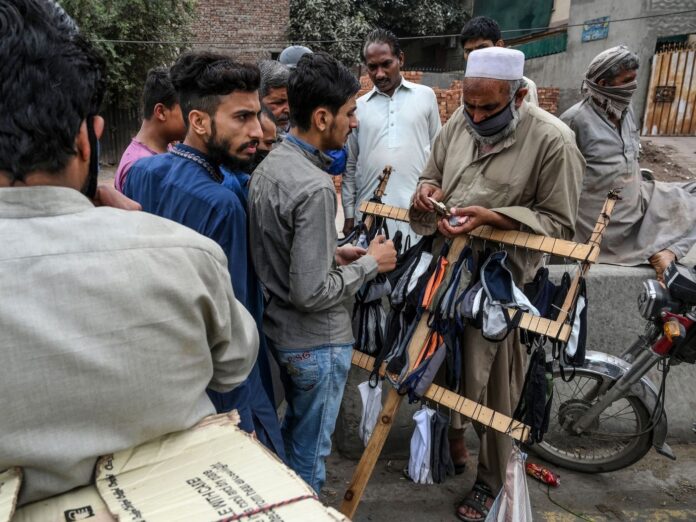‘Many emerging markets and developing countries face a dilemma: borrow and risk a debt crisis, or choose austerity and risk a development crisis. Resolving it will require policymakers to address two collective-action problems that markets cannot resolve on their own.’ – excerpt from July 2, 2021, Project Syndicate article ‘How to balance debt and development’ by Homi Kharas and Meagan Dooley
In the recent G7 Summit in Cornwall, UK, the important issue of debt relief was not addressed in any significant way, as pointed out by Nick Dearden in his article ‘The change we need will never come from the G7’ as ‘Beyond vaccines, the pandemic has triggered a debt crisis in many countries, which could heighten poverty and inequality for a generation. Yet the G7 offered nothing new to change this situation, in particular taking no action against the banks and hedge funds which continue to drain billions of dollars a year from countries that should be spending on healthcare and economic protection.’
The pandemic-caused recession, and investments required to support public health sector, along with allocations needed for purchasing Covid vaccine, all took a heavy toll on the already difficult debt situation of many developing countries, as pointed out by Homi Kharas and Meagan Dooley in their same article: ‘Half of all low-income countries were in debt distress or at high risk before the pandemic, according to the International Monetary Fund, and six have defaulted in the past year. In addition, 36 developing countries have had their sovereign credit rating downgraded by one of the three major ratings agencies, and 28 others have had their outlook downgraded.’
In addition, the pandemic also caused a significant drop in foreign direct investment globally, where the same article pointed out in this regard that ‘Global foreign direct investment fell by 40% in 2020 and is expected to decline by another $100 billion in 2021. Greenfield investment projects and cross-border mergers and acquisitions were likewise down 50% last year’, which also took a lot away from another important source for developing countries in terms of supporting both their difficult balance of payments situation in general, and also help revive their economies and jobs from the ravages of pandemic-caused-recession.
At the same time, countries following years of neoliberal policy prescription of, for instance, large-scale financial market liberalization, especially developing countries, and in particular among those which have been prolonged users of International Monetary Fund (IMF) resources for long periods, like Pakistan, run a serious risk of suffering from the highly fluid nature of foreign portfolio investment (FPI), which they are primarily getting under a wave of idle, yield-hungry capital during the pandemic-caused recessionary situation globally – since macroeconomic fundamentals have not changed much as such in developing countries during the pandemic to otherwise create this much attraction for this tide of FPI landing in developing countries in general, which have been pushed to pay even higher yields to build BOP cushion for their respective economies– and which may leave after the world opens up once the pandemic subsides, and there are increasing avenues for greater FDI inflows.
As inoculation rates reach significant numbers in advanced, rich countries, which have also been injecting huge amounts of stimulus– unlike developing countries in general, where such cushion was neither there as such, to start with before the pandemic, and with recession, shrunk even further, and created need for walking a thin rope due to the debt versus development trade-off– there are already signs of things picking up on the economic front in developed countries, unless future waves of new dangerous variants appear significantly and dampen this recovery.
Yet, developing countries have not received any major debt relief from bilateral and multilateral creditors. In fact, the elusive SDR 500 billion up till now, which were to come for supporting developing countries in their difficult balance of payments (BOP) and external debt situation, is long overdue. That it has been well over a year since pandemic hit, this support should have come a lot earlier, and is eagerly being awaited.
With recovery in developed countries building pace, and economic activity reviving, this would create greater destinations for this FPI currently being invested in developing countries, including being invested as FDI as rewarding long-term equity returns, at which time, these developing countries are likely to receive a big shock from this capital flight, with significant chances of a BOP and debt crisis emerging in developing countries.
Yet, developing countries have not received any major debt relief from bilateral and multilateral creditors. In fact, the elusive SDR 500 billion up till now, which were to come for supporting developing countries in their difficult balance of payments (BOP) and external debt situation, is long overdue. That it has been well over a year since pandemic hit, this support should have come a lot earlier, and is eagerly being awaited. The global commodity prices– at a ten-year record high currently– are also adding difficulty to an already challenged BOP situation in many developing countries, in addition to adding to inflationary pressures there.
While debt moratorium/relief has been provided, this has been quite insignificant given the high level of debt burden being faced by developing countries, which like the rest of the world are faced with the existential threat of the fast-approaching climate change crisis– where Pakistan, for instance, is among those top ten countries globally, likely to be most affected by this crisis– have not received in any significant way, the climate financing committed by advanced countries a number of years ago. In this regard, Nick Dearden in the same article pointed out with regard to the performance of the recent G7 Summit that ‘And on the major issue of our times, halting climate change, the summit merely reaffirmed a decade-old target to give developing countries $100bn a year to adapt to climate change– a promise which they have already failed to honour in practice– and made a commitment to phasing out coal, but with no real details.’























